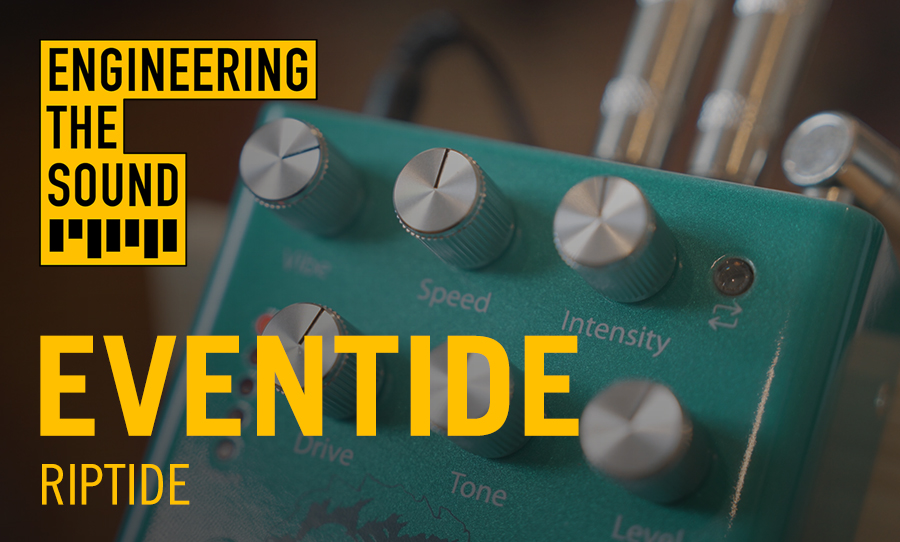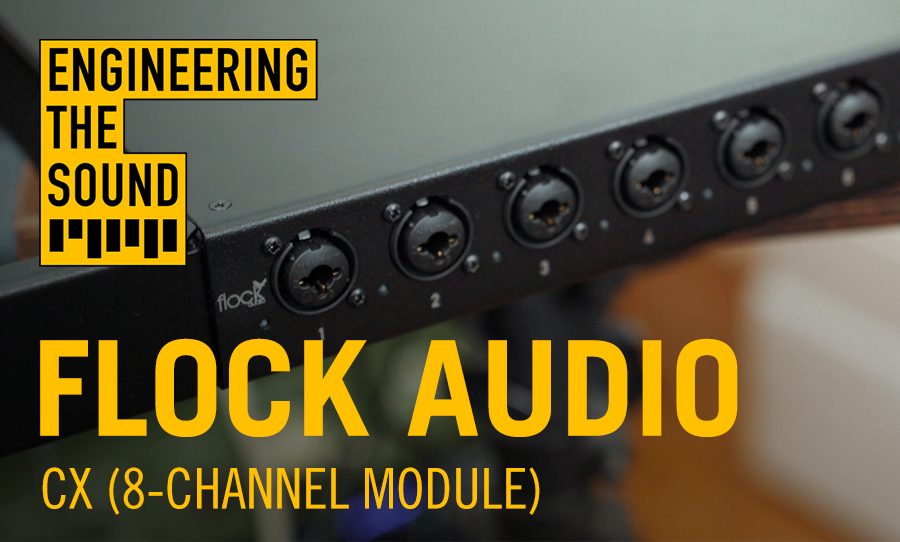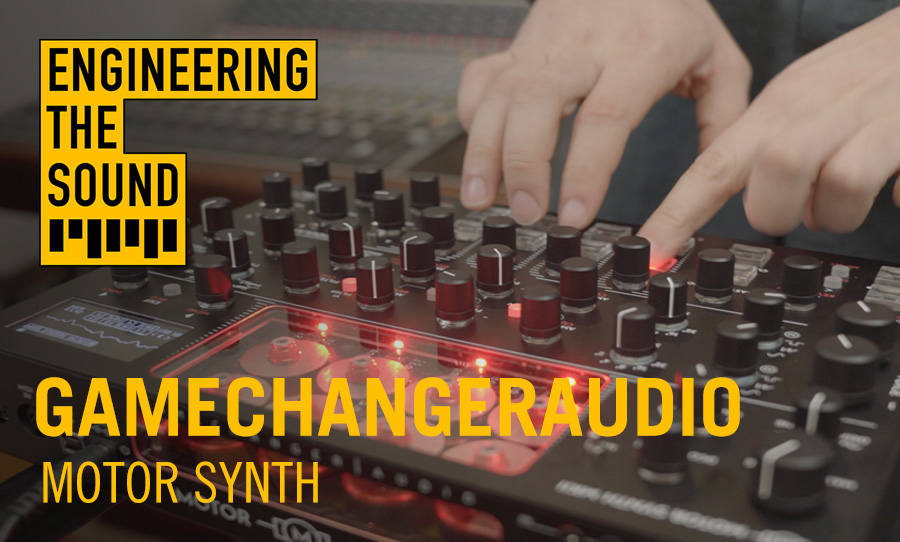What happens when an audio company that also innovates in aircraft technology builds a vibrato and drive pedal?
Eventide was founded in 1971 in the basement of the New York Sound Exchange recording studio purely out of necessity, they needed to rewind their Ampex tape machine to precise positions and didn’t have space (or probably budget) for a tape operator, so they developed their own locator system, and the Eventide Clockworks company sprang into life.
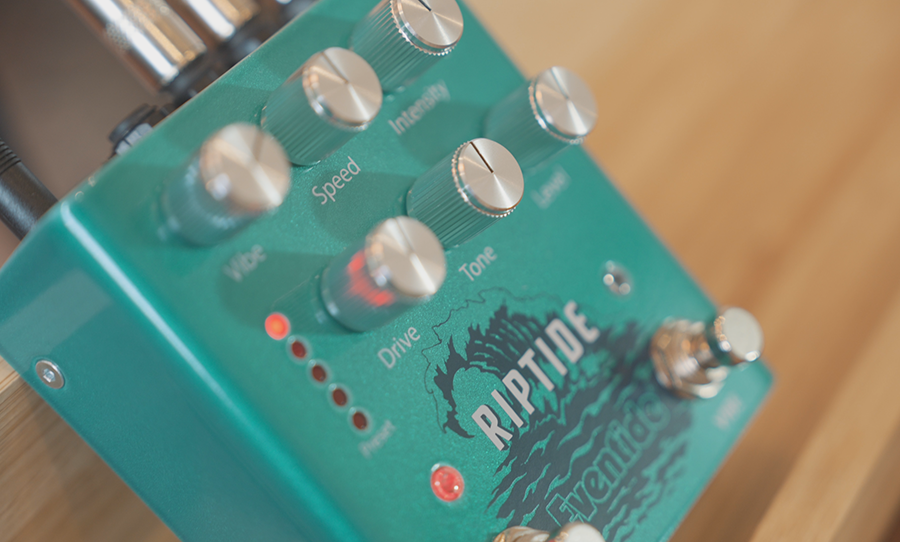
It’s cool that these weren’t a bunch of business guys making profit driven decisions, but rather audio engineers working in their field building something out of necessity, and around that an organic company bloomed.
Co-founder Richard Factor used his job in military manufacture to source faulty primitive IC chips to build an early pitch shifter, and from here kept up with IC technology, scrounging and utilising whatever was available to build new units, ending up with the likes of the Instant Phaser, digital delays, and eventually, their most famous piece, the H910 Harmonizer.

The company continued innovating; shortening their name to just Eventide, coming up with Argus, their groundbreaking aviation mapping devices, and is now a world leader in voice logging tech, supplying again to the aviation industry, plus public safety including 911 calls.
Anyway, whilst Eventide are making incredible non-musical products, they’re fortunately still working the audio realm, and here we have the stereo Riptide Vibrato/chorus and drive unit – A piece that I’m pretty sure is part of their recent Dot 9 series (or at least that’s what the circuit board says).

It’s a digital micro-processor based effects unit with an emulation of the classic Shin-ei UniVibe running into a drive unit, the order of which is switchable.
It’s got access to five presets, which you can save over, or you can straight up tweak the knobs on this thing and adjust the amount of vibrato, the speed, and the intensity, plus the drive amount, the tone, and the level, both sections being independently switchable.
Hitting the led up the top right will switch the pedal order, from vibrato up first to drive, and hitting the LEDs above each clickless switch will change the voicings of each effect. On the vibrato, green in the trad uni-vibe, whilst red is a deeper, phaser unit. And with the drive, green is a dynamic, mid range crush, and red is a smoother, boosted number.
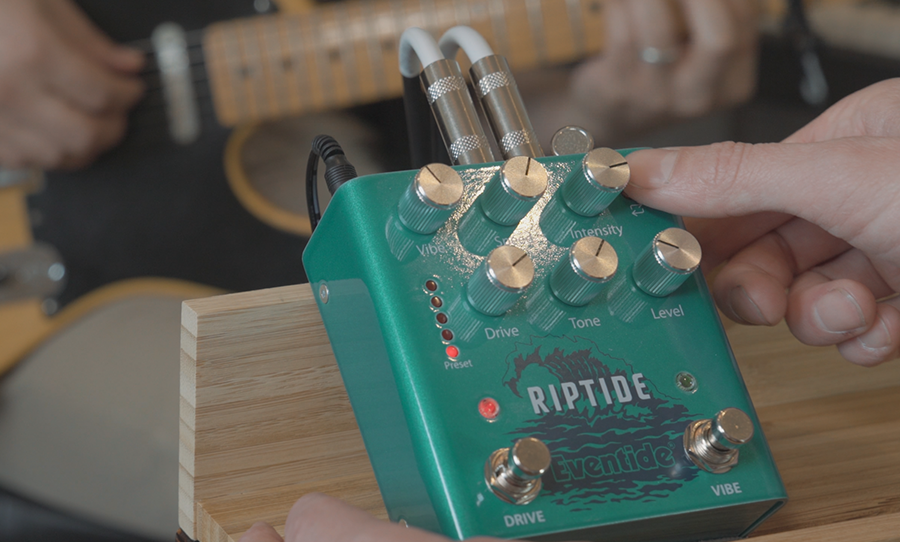
The Riptide can be fed mono or stereo signals to work with, selectable via switch on the rear, and has 2 outputs. Today we’ll be feeding in a mono guitar signal and seeing what comes out the pair of outputs.
You can also switch between guitar and line level for effects loops or easy reamping.
The box will take an expression pedal, and you can fool around with the USB if you love MIDI and software updates. There’s also a deep world of system settings you can fool around with – I”m going to avoid those today and use this thing as it comes straight out of the box.

Taking a look inside the unit you can see that it’s powered by a Renesas Microprocessor, which has very obviously been programmed by someone with a good ear for sound.
Unfortunately looking inside modern digital units is never as exciting as the componentry of older boxes.
And there we have it, the Eventide Riptide, a Shin-Ei univibe with a Drive unit built in, a box that can easily cycle between vintage and modern tone, with the ease and reliability of a modern componentry and digital switching.
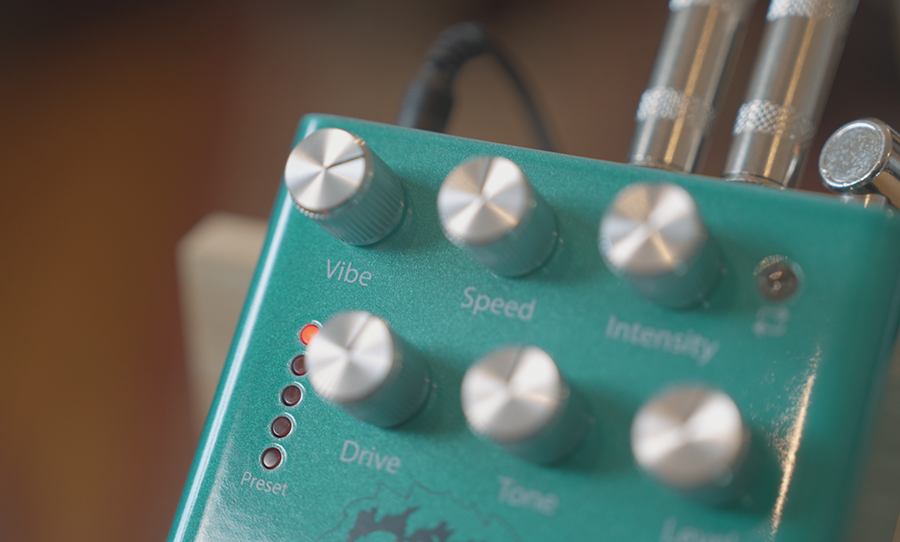
It’s always interesting to see what a company that has existed on the realms of innovation can do with products that hark back to older units. The Riptide has two jobs to do, and it does em both well, and with ease so you can focus on playing and music making.
The Eventide Riptide retails for $498AU and is available at all places you’d buy quality audio equipment.
